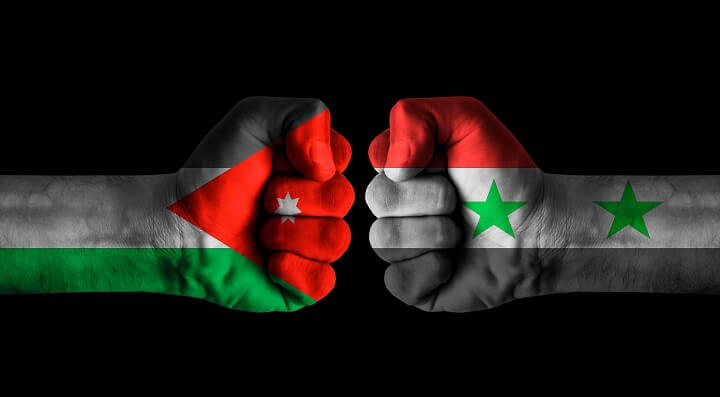Jordan and Syria are neighboring countries. Both countries share commonalities in culture, religions and language. Both
countries’ culture is based on Arabic and Islamic elements. Still, Each country
has its own unique physical, historical and cultural geography.
The largest religious group in Jordan and Syria are
the Muslims. Although Islam is the dominating religion, there are many
Christian groups found in both countries
and are varied, such as Greek, Oriental Orthodox, Roman Catholic, and others.
The largest cultural-linguistic group are Arabs in
Jordan and Syria. But also Circassians, Chechens, Turks and Armenians are the
base of the cultural body of both countries.
Social and family loyalty is of great importance in
Jordanian and Syrian culture. Family is one of the most important elements of
society. Family loyalty and bonds are the most important lesson taught in
Jordanian and Syrian families.
Syrian
Refugees in Jordan
Jordan is hosting around 662,000 registered Syrian
refugees as of 2019. The refugees fled from Syria due to the war in 2011.
Jordan has three registered refugee camps for Syrians, which are Zaatari,
Mrajeeb Al Fhood and Azraq.
Syrian refugees in Jordan are made of different ethnic
and religious backgrounds. The majority are Arabs, including Syrian
Palestinians, Syrian Turkmen and Syrian Kurds.
The Culture of Jordan
Jordanian culture and religion have been influenced by
its political history and the history of trade. Jordan is home to fascinating
historical and biblical sites. The country has many wonders from the endless
desert, to the Dead Sea, and the ancient city of Petra. Significant cultural
features are traditional Jordanian music and Jordanian food.
The People
Jordanians are generally friendly, kind, magnanimous
and hospitable. They are generally socially conservative. Family values and
honor are strongly defended. The people of Jordan are proud of their rich
cultural heritage.
The Language
Arabic is the official language in Jordan. English
happens to be the second official language of the country. In some private
schools French is being taught from an early age.
The Music and Dancing
The country-style songs, known as Zajal, are performed
alongside improvised poetry on various instruments. Traditional Jordanian
Musical Instruments are Tablah, reed pipe, Oud, Arghul, Mijwiz, Rababah and
Daf.
As for dancing, Jordan is famous for its own style of
“Dabkeh”. “Dabkeh” is a traditional group form of dance, popular among Bedouins
and non-Bedouins. People line up shoulder to shoulder and move in a circle,
following certain steps and stomps. “Dabkeh” is usually performed in
celebrations like weddings.
The Food
The most famous Jordanian Dish is “Mansaf”. Mansaf is
made of a combination of rice, lamb meat cooked in “Jameed”. For those who don’t know, “Jameed” is a
yogurt sauce made of goats’ milk. The dish is garnished with fried nuts such as
almonds. Jordanians also use “Shrak” bread in the making of “Mansaf”.
“Hummus” and “Falafel” are traditional foods in
Jordan. Jordanians often eat them for breakfasts and dinners. They’re
traditionally eaten on Fridays for breakfast.
Most of Jordanian dishes are based on either Chicken
or Lamb. They are more common than beef and fish.
It’s important to mention that it’s easy to follow a
vegan or vegetarian diet in Jordan, because Jordanians use various vegetables in
their dishes.
Traditional Clothing
Traditionally, Jordanian women used to wear long
flowing dresses with intricate embroidery and intricate details. While men wore
“Thawb” or “Dishdasha”, which is a plain long robe with long sleeves.
Although it’s not common anymore to dress up like that
for both men and women, it still can be seen in rural areas, and also in
traditional occasions like weddings and religious holidays.
The Business Culture in Jordan
In Jordan both governmental and private business
sectors exist. Private businesses are both local and international. Jordan is
famous for its agriculture, producing various sorts of fruits and vegetables,
and also wheat. Other traditional industries are potash extraction and
phosphate mining. Refining petroleum, chemical manufacturing, and production of
metals and minerals, are all solid industries in Jordan. The service sector
covers tourism, transport, finance and banking, and also wholesale and retail
trading.
The work week in the private sector is usually from
Sunday to Thursday. And Usually from 08:30 to 18:00 with one hour for lunch
break.
While the government sector shares the same work week
days, its working hours are different, to be from 08:00 to 15:00.
Employees usually are dressed in formal attire. But
also a smart casual dress code is accepted in some companies and businesses.




